Sambong National Recreational Forest (국립 삼봉자연휴양림)
0m 98947 2022-12-27
276, Sambonghyuyang-gil, Hongcheon-gun, Gangwon-do
+82-33-435-8536
Located in Odaesan National Park, Sambong National Recreational Forest is filled with large acicular trees like fir and broad-leaved trees like birch. Lenoks, a species of freshwater fish that are considered a Korean natural treasure, found only in the cleanest water, thrive in the waters of the deep valley running through the park. The park is surrounded by three peaks – Gachilbong Peak (1,240 meters), Eungboksan Mountain (1,155 meters), and Sasambong Peak (1,107 meters). Sambong Mineral Spring is found In the middle of the three peaks. The spring’s waters are said to ease stomach complaints. The park is also popular since visitors can see beautiful fall foliage in autumn while enjoying the mountains and sea at the same time in summer.
Sambong Tongnamu Sanjang (삼봉 통나무산장)
1.7 Km 18416 2024-03-27
42 Sambonghyuyang-gil, Nae-myeon, Hongcheon-gun, Gangwon-do
033-435-2829
Sambong Tongnamu Sanjang is renowned for its spicy and savory dakbokkeumtang (spicy braised chicken), prepared with fresh chicken. The dish is further enhanced with potatoes and a mix of vegetables, which lend a subtle sweetness that complements the overall flavor. The restaurant also offers other popular dishes, including baeksuk (whole chicken soup) and minmul maeuntang (spicy freshwater fish stew). The log cabin-style exterior of the restaurant adds to its charm, giving diners the feeling of visiting a cozy mountain lodge.
Hongcheon Ginkgo Forest (홍천 은행나무숲)
2.4 Km 66542 2024-02-28
686-4 Gwangwon-ri, Nae-myeon, Hongcheon-gun, Gangwon-do
Hongcheon Ginkgo Forest, adorned with over 2,000 ginkgo trees planted at intervals of every five meters, is a private sanctuary that opens its gates to the public exclusively in October. This enchanting forest, cultivated and nurtured by a single individual for more than thirty years, transforms into a golden paradise in autumn. In addition, the nearby Sambong Springwater, recognized as one of Hongcheon's nine scenic wonders, along with the Guryongnyeong Pass, enhances the area's appeal as a prime tourist destination, making the forest an ideal spot for autumn visits.
Bangtaesan National Recreational Forest (국립 방태산자연휴양림)
9.5 Km 23677 2021-08-10
241, Bangtaesan-gil, Inje-gun, Gangwon-do
+82-33-463-8590
Bangtaesan National Recreational Forest is mostly comprised of natural forests, with some man-made sections included. The recreational forest is located in the valley between Guryongdeokbong (alt. 1,388 m) and Jueokbong (alt. 1,443 m) Peaks. The area is known for its beautiful scenery like the two-tier waterfall and Madangbawi Rock. The varied trees provide fantastic foliage year around, especially in autumn. Wild animals like rabbits, roe deer, and squirrels inhabit the forest.
Bangdong Mineral Spring (방동약수)
11.7 Km 9915 2021-05-31
89-59, Bangdongyaksu-ro, Inje-gun, Gangwon-do
+82-33-460-2170
Bangdong Mineral Spring is located in Bangdong-ri in Girin-myeon. It is so renowned that it has been designated as one of the Great Mineral Springs of Korea. The water has a high content of carbon that makes it sparkle, and it tastes like Korean 7-up when sugar is added. In addition to carbon, the water also contains iron, manganese, and fluorine, making it effective in curing gastric problems and helping with digestion.
According to legend, there lived a simmani (ginseng digger) 300 years ago who, one day, dug a 60-year old wild ginseng in Bangdong-ri. Called yukgumandal, the ginseng was known to have been a great medicine of mystery. From the spot where the ginseng was dug came a mineral spring, which became today’s Bangdong Mineral Spring. The mineral spring has continued to attract people since the first day the ginseng was found and people who have drunk its water are said to have experienced various beneficial effects.
Bangdong Mineral Spring is also close to the woods, several valleys, and waterfalls.
Sangwonsa Temple (상원사(오대산))
11.7 Km 18715 2021-12-06
1215-89, Odaesan-ro, Pyeongchang-gun, Gangwon-do
+82-33-332-6666
Sangwonsa Temple is located 8 kilometers north of Woljeongsa Temple. The temple was built by Buddhist monk Ja Jang in the 12th year of Silla Queen Seondeok, and rebuilt in 705 during the 4th year of King Seongdeok's reign. It burned down in 1946, but was restored once again in 1947. The temple is home to the Bronze Bell of Sangwonsa (a National Treasure), the oldest bronze bell in the nation. The bell, built during the 24th year of King Seongdeok, has a x_height of 1.67 meters and a diameter of 91 centimeters with a beautiful, clear ring. Other relics at the temple include Statue of Child Manjusri, said to have been seen directly by King Sejo, as well as a tablet commending the rebuilding of Sangwonsa Temple, written by King Sejo. Gwangdaegeori, located at the temple entrance, is also connected with King Sejo through a story of his bathing in the pure mountain stream one day while visiting Sangwonsa Temple.
Micheongolgyegok Valley (미천골계곡)
13.6 Km 34283 2019-11-09
Guryongnyeong-ro, Seo-myeon, Yangyang-gun, Gangwon-do
+82-33-670-2397
Micheongolgyegok Valley starts from the Yangyang area and ends right before Guryongnyeong Pass. With not many visitors here, the valley is left in a pristine condition. The area is famous for its rich forest, clean water, uniquely shaped rocks, wild flora and fauna, underground mineral water, cultural heritages of the ancient SIlla kingdom, locally produced honey and other forest products. The Micheongolgyegok Valley Recreational Forest is 5,652,000㎡ in size filled with broadleaf trees. At the entrance of the valley is Seollimwon Temple Site, which was originally established under the reign of King Beopheung of Silla and then closed at the end of the Goryeo dynasty. Other relics include a stone lamp, 3-story stone pagoda, Honggakseonsa Monk Pagoda, and a stupa.
Buyeondong Village (부연동마을)
15.3 Km 30184 2024-03-18
1298 Samsan-ri, Yeongok-myeon, Gangneung-si, Gangwon-do
Located at the foot of Odaesan Mountain, north of Gangneung, Buyeondong Village maintains the historic appearance and traditions of Korea's rural villages from the past. It is also known as Gamaso Village, named after the local Buyeondonggyegok Valley that runs through it. Both the valley and the village boast clear and beautiful scenery. Due to its remote location, the village is not served by public buses. It can be reached by car in about 40 minutes from Gangneung Station.
Beopsuchigyegok Valley (법수치계곡)
15.4 Km 64345 2024-02-05
Beopsuchi-ri, Hyeonbuk-myeon, Yangyang-gun, Gangwon-do
Beopsuchigyegok Valley meanders through the northern and southern areas of Gangneung and Yangyang, eventually merging with the East Sea. To reach Beopsuchigyegok Valley on the northern side of Odaesan Mountain, follow the Eoseongjeongyegok Valley, which is situated at the uppermost part of Namdaecheon Stream. This area is known as a returning point for species like big-scaled redfin, sweetfish, and salmon from the sea. Beopsuchigyegok Valley is believed to be the origin of the main stream of Namdaecheon Stream. Its name is derived from the concept of the "water of wisdom", a Buddhist metaphor symbolizing the Buddha’s wisdom washing away earthly desires, reflecting the clarity of the valley's waters.
Gyebangsan Mountain (계방산 (평창))
16.2 Km 27359 2019-07-06
1243, Unduryeong-ro, Pyeongchang-gun, Gangwon-do
+82-33-332-6419
At an altitude of 1,579.1 meters above sea level, Gyebangsan Mountain, which faces Odaesan Mountain on the eastern part of the Taebaeksan Mountain Range, is the fifth tallest mountain in South Korea, after Hallasan Mountain, Jirisan Mountain, Seoraksan Mountain, and Deogyusan Mountain. On the west side of Gyebangsan Mountain is Unduryeong Pass(1,089 m), which has a vehicle accessible road. Asiatic black beers are said to habitate in the deep valleys on the north side, and there is Bangadari mineral water and other mineral water sources on the south side. With many varieties of herbs and wild flowers growing naturally in the area, it is also well known as a place to dig for wild ginseng. Its rare Japanese yew trees and royal azalea combined with its similar terrain to Seoraksan Mountain's Daecheongbong Peak has caused the mountain to be a highly protected ecological environment.
Gyebangsan Mountain is particularly popular for winter hikers, who can get beautiful views of the snowy landscapes of the mountain even until March. On top of that, since the difference in evelation from Unduryeong to the top of Gyebangsan is only 488 m, it welcomes even novice hikers as well. From the summit, one can see the backboone of Baekdudaegan Mountain, and with its panoramic views of Seoraksan Mountain to the north, Odaesan Mountain and Daegwallyeong to the east, and Taegisan and Hoegisan Mountains to the west, it is one of the best views in the area.
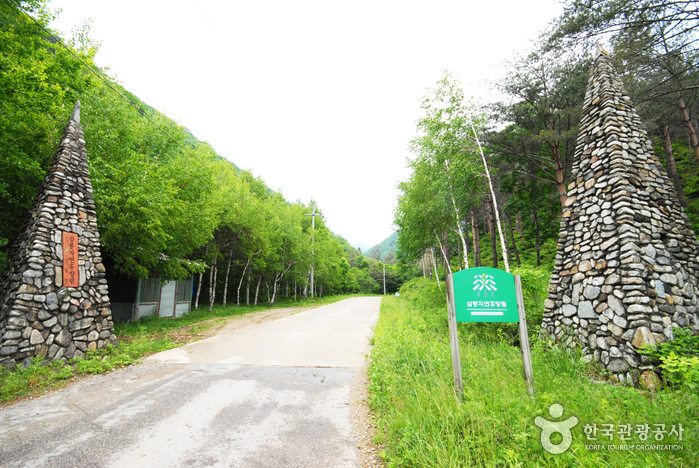
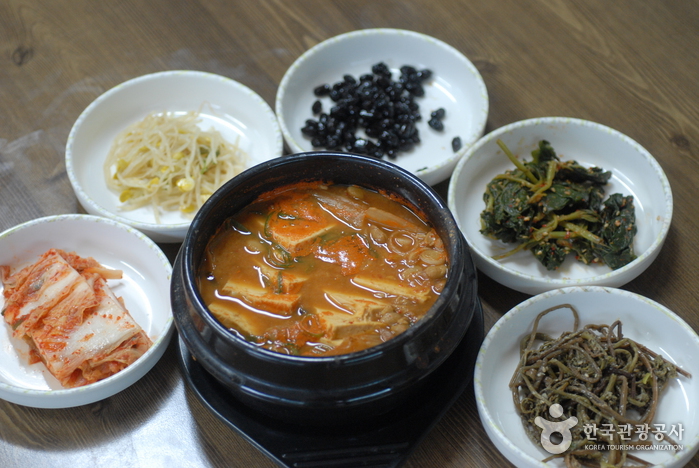
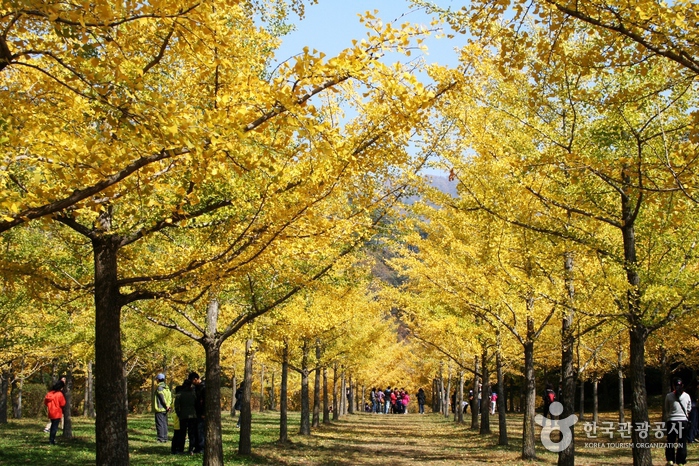
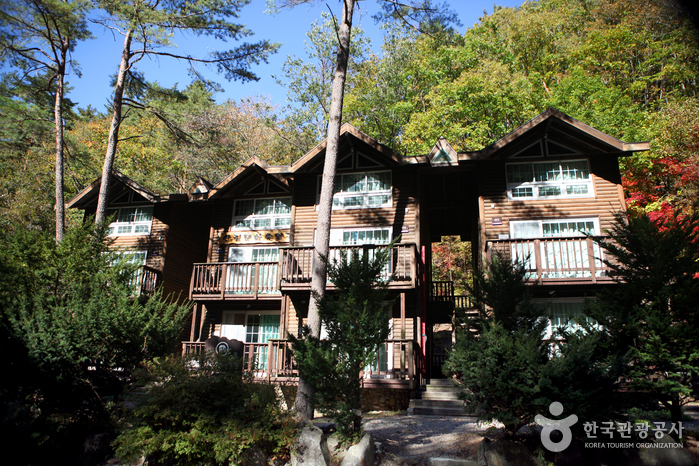
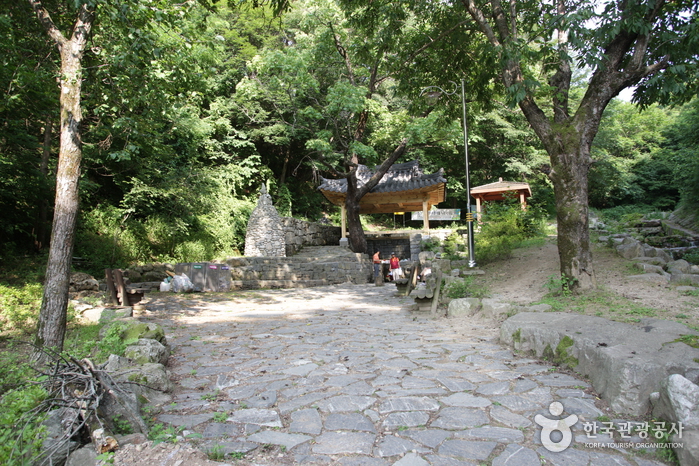
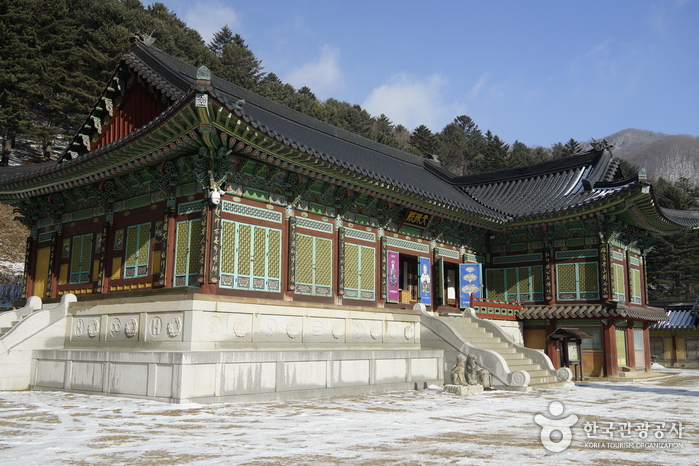
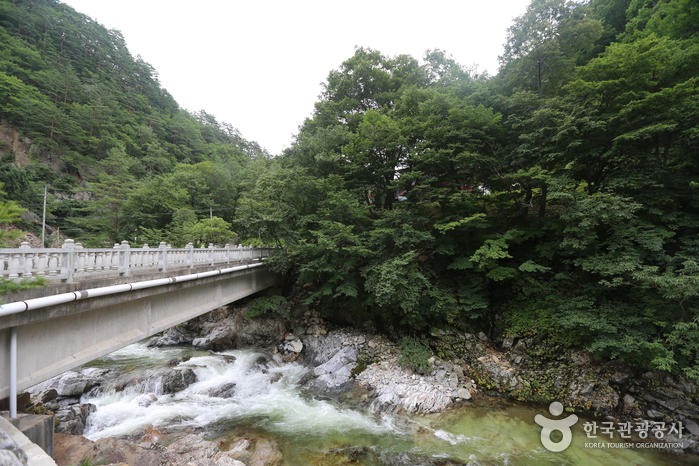
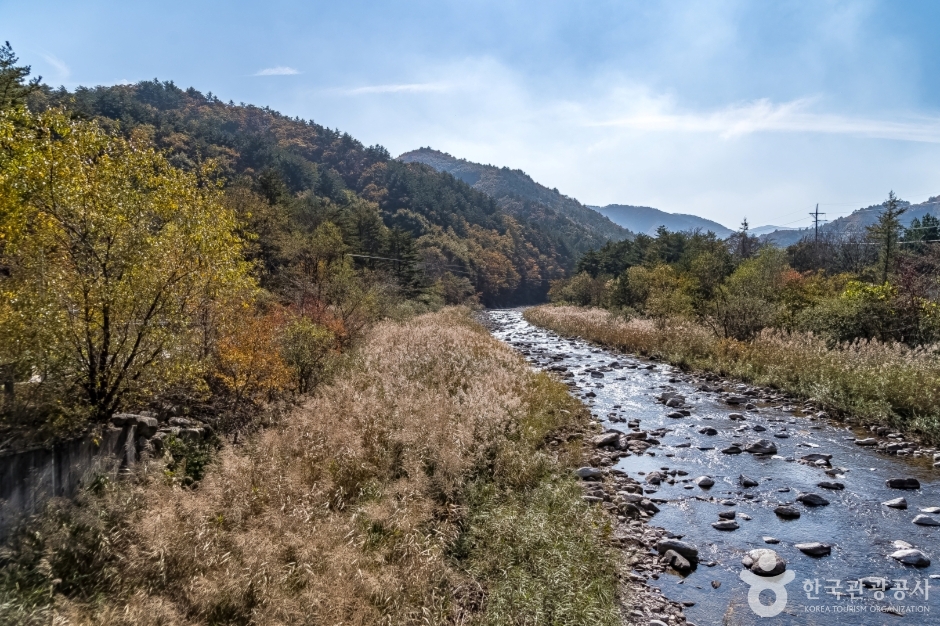
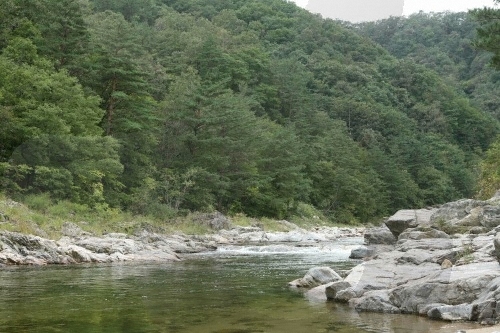
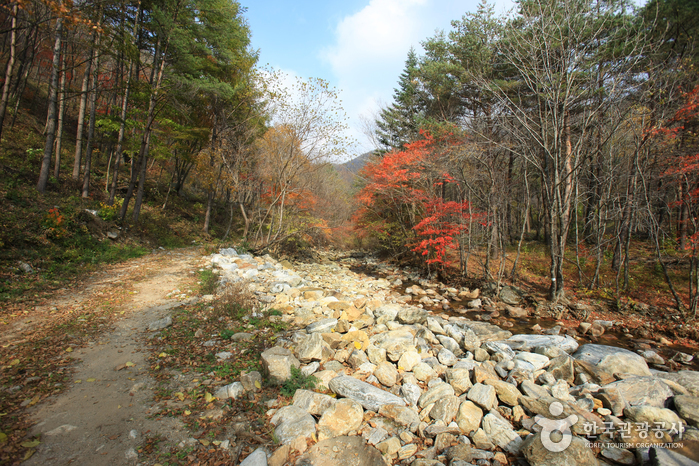
 English
English
 한국어
한국어 日本語
日本語 中文(简体)
中文(简体) Deutsch
Deutsch Français
Français Español
Español Русский
Русский